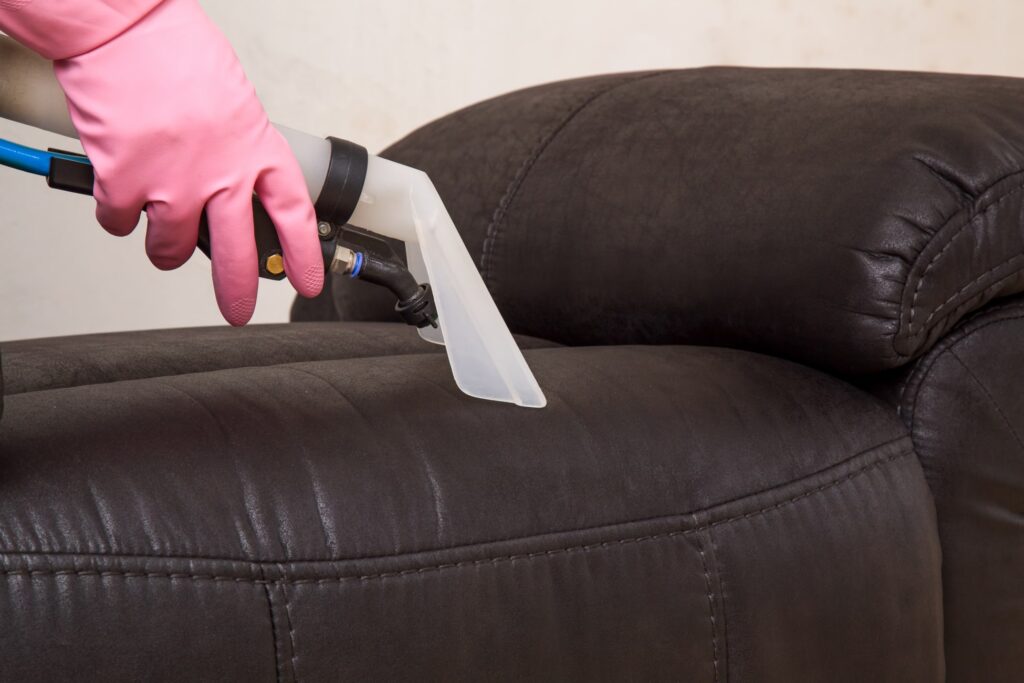
Leather upholstery is a timeless addition to any home, bringing elegance, sophistication, and durability. However, without proper care, it can quickly lose its luster and develop cracks, stains, or discoloration. Cleaning leather furniture requires a careful balance of maintenance, ensuring the material remains hydrated and free from dirt without causing unnecessary damage. Many homeowners unknowingly make mistakes that lead to premature wear and tear, which is why understanding the right and wrong ways to clean leather upholstery is essential. By following these do’s and don’ts, you can keep your leather furniture looking flawless for years to come.
Do: Use a Soft, Damp Cloth for Regular Cleaning
One of the most effective ways to maintain leather upholstery is by wiping it down with a soft, slightly damp cloth. Dust and dirt particles settle on the surface over time, and if left unattended, they can cause the leather to become dull or even scratched. Regular cleaning with a damp microfiber cloth helps remove these particles before they settle into the material. It’s essential to avoid excess moisture, as too much water can seep into the leather and cause damage. For a deeper clean, a mild soap diluted in water can help lift light stains and maintain the suppleness of the fabric.
Don’t: Use Harsh Chemicals or Ammonia-Based Cleaners
While it might be tempting to use strong cleaning products to remove stubborn stains, harsh chemicals can do more harm than good. Bleach, ammonia, and alcohol-based cleaners can strip leather of its natural oils, leading to dryness, cracking, and discoloration. Excessive water can also be damaging, as leather is highly absorbent. Too much moisture can seep into the material, causing warping and weakening its structure. Instead, opt for pH-balanced leather cleaners that are specifically formulated to maintain the material’s integrity without causing damage.
Do: Condition Your Leather Upholstery Regularly
Just like human skin, leather needs moisture to stay soft and supple. Over time, exposure to sunlight, air conditioning, and general use can dry out the material, making it prone to cracking. To prevent this, apply a high-quality leather conditioner every few months. This helps restore lost oils and keeps the surface smooth and flexible. When conditioning, use a soft cloth and apply a small amount in circular motions, ensuring even coverage. Avoid over-conditioning, as too much product can create a sticky or greasy residue.
Don’t: Expose Leather to Direct Sunlight for Prolonged Periods
Sunlight can cause leather upholstery to fade and dry out, making it brittle over time. If your furniture is placed near a window or in a spot with direct sunlight, consider using blinds or curtains to limit exposure. Alternatively, repositioning your furniture or using protective covers can help prevent fading and cracking. If some discoloration has already occurred, professional restoration services can help bring back its original appearance.
Do: Address Spills and Stains Immediately
Accidents happen, and when they do, it’s important to act fast. Leather absorbs liquids quickly, so blotting spills with a dry, absorbent cloth as soon as they occur can prevent staining. Avoid rubbing, as this can push the liquid deeper into the material. For stubborn stains, a mild soap solution or a specialized leather cleaner should be used carefully. Always test any product on a hidden section first to ensure it doesn’t cause discoloration.
Don’t: Neglect Regular Maintenance
Many people only think about cleaning their leather upholstery when they notice dirt or stains, but preventative care is key to maintaining its longevity. Dust and debris accumulate over time, contributing to premature aging of the material. Regular vacuuming using a soft brush attachment, combined with periodic deep cleaning, helps keep leather furniture looking pristine. By incorporating these habits into your routine, you can extend the life of your investment and keep your lounge looking stylish and inviting.

